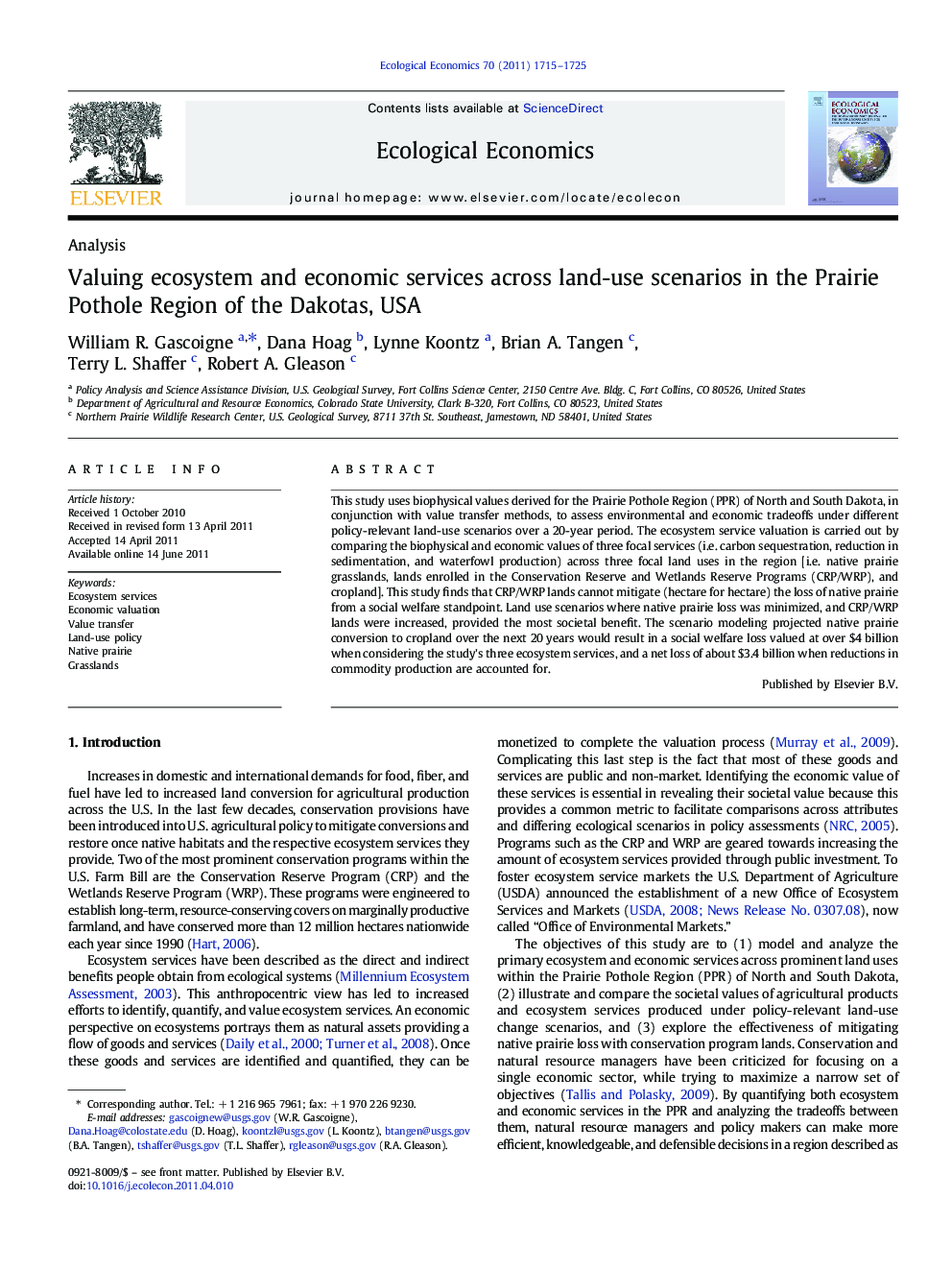| Article ID | Journal | Published Year | Pages | File Type |
|---|---|---|---|---|
| 5050642 | Ecological Economics | 2011 | 11 Pages |
This study uses biophysical values derived for the Prairie Pothole Region (PPR) of North and South Dakota, in conjunction with value transfer methods, to assess environmental and economic tradeoffs under different policy-relevant land-use scenarios over a 20-year period. The ecosystem service valuation is carried out by comparing the biophysical and economic values of three focal services (i.e. carbon sequestration, reduction in sedimentation, and waterfowl production) across three focal land uses in the region [i.e. native prairie grasslands, lands enrolled in the Conservation Reserve and Wetlands Reserve Programs (CRP/WRP), and cropland]. This study finds that CRP/WRP lands cannot mitigate (hectare for hectare) the loss of native prairie from a social welfare standpoint. Land use scenarios where native prairie loss was minimized, and CRP/WRP lands were increased, provided the most societal benefit. The scenario modeling projected native prairie conversion to cropland over the next 20Â years would result in a social welfare loss valued at over $4 billion when considering the study's three ecosystem services, and a net loss of about $3.4 billion when reductions in commodity production are accounted for.
